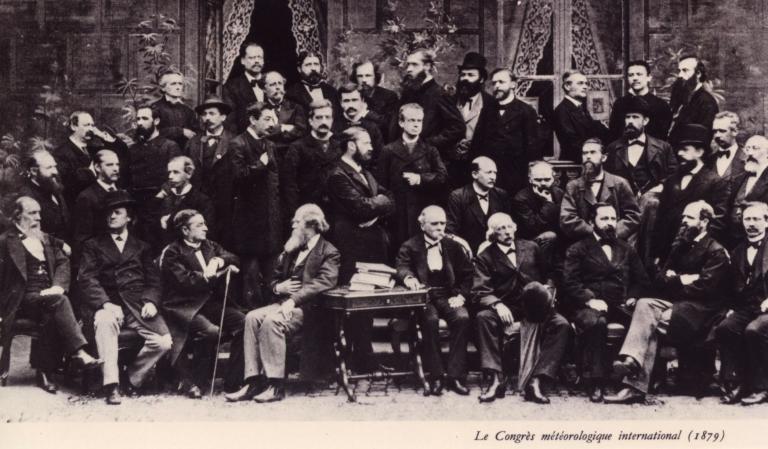19th Century Origins

The history of the WMO community is fascinating.
Weather forecasting originated with the standardization of maritime data and meteorological observations at sea. US Navy lieutenant Matthew Fontaine Maury was one of the driving forces of this, as was Admiral FitzRoy, who in 1860 started issuing storm warnings for sailors off the coasts of the United Kingdom and, one year later, general weather forecasts.
The electric telegraph, developed by Samuel Morse in the 1830s, was first used to transmit weather reports in 1849. It was clear, however, that the Morse Code did not meet the needs for a uniform system of meteorological observations using data from large areas. And this became the rationale behind the first International Meteorological Congress in 1873 in Vienna.
"It is elementary to have a worldwide network of meteorological observations, free exchange of observations between nations and international agreement on standardized observation methods and units in order to be able to compare these observations," said Prof. Buys Ballot, director of KNMI (The Royal Netherlands Meteorological Institute) and the first International Meteorological Organization President from 1873 to 1879.
The principle of free data exchange has been one of the driving forces behind WMO ever since and remains valid even today.
The early years of IMO witnessed slow but steady improvements in meteorological instrumentation – and efforts to develop a worldwide network of meteorological stations. The first International Polar Year 1882-83 established observing stations around the North Pole, and the Second International Polar Year 1932-33 demonstrated how observations in the Polar regions could improve the accuracy of forecasts in other parts of the world.
The 20th century saw big meteorological advances and also new demands for international co-operation – and this was shown repeatedly during both the First and Second World Wars.
The structure of IMO was no longer sufficient. An International Meteorological Committee meeting in 1946 adopted a draft World Meteorological Convention which was eventually signed on 11 October 1947 and came into force on 23 March 1950. IMO formally became the World Meteorological Organization on the 17th March 1951.
